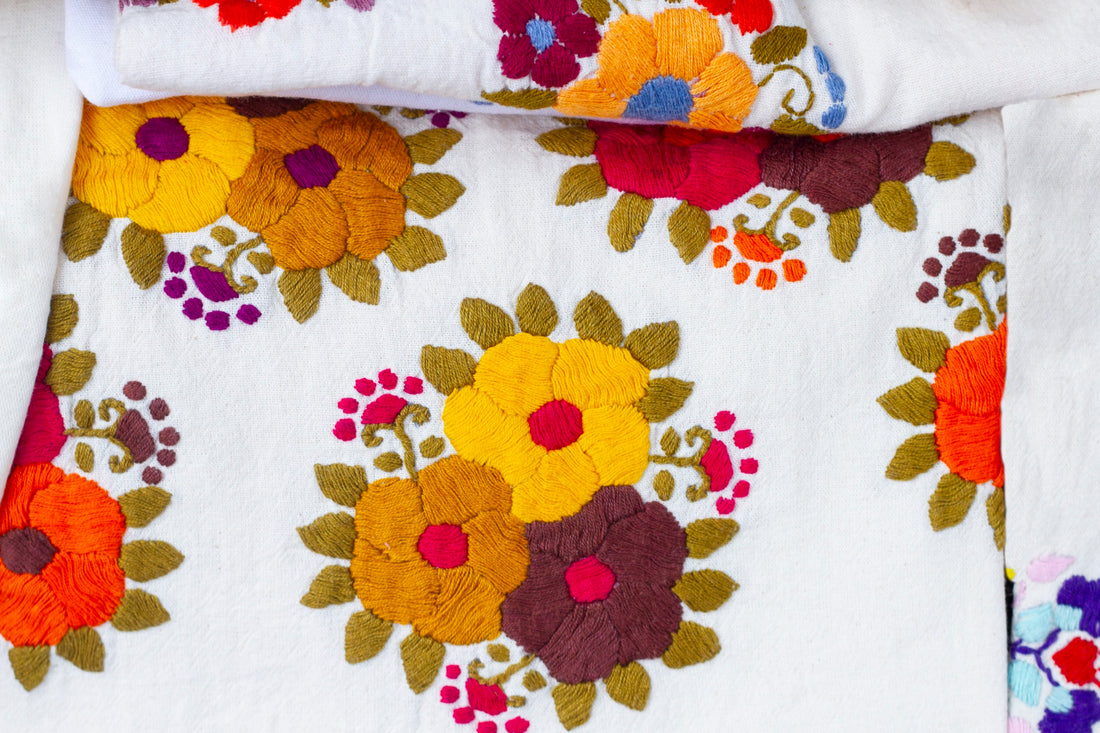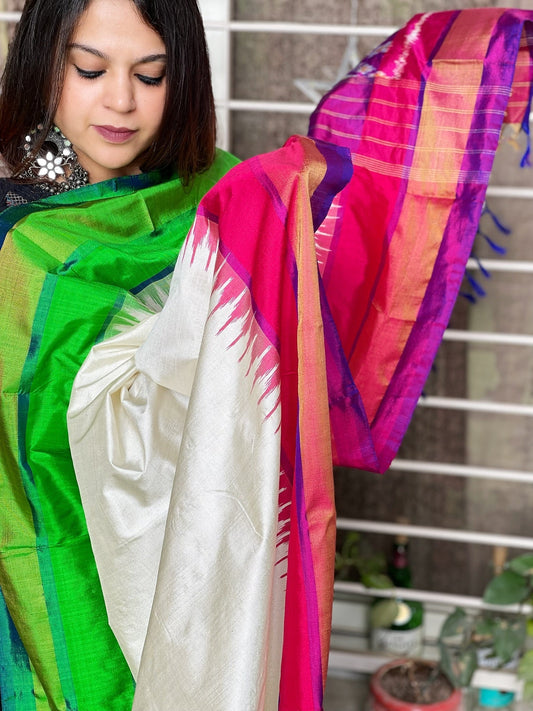When we explore the colourful and intricate world of Phulkari embroidery, we're delving into a rich tapestry of Indian heritage. Phulkari, which means 'flower work', has been a beloved craft in the Punjab region for centuries.
Originally, this embroidery was done purely for personal use, to adorn shawls, dupattas, and headscarves for everyday wear and special occasions. Today, we see Phulkari as a symbol of cultural pride and craftsmanship.
Understanding how to spot genuine Phulkari work is essential for us, especially as we strive to keep our traditions alive in the modern marketplace. With industrially produced imitations flooding the market, it's becoming increasingly difficult to distinguish authentic pieces from fakes.
So, we aim to arm you with the knowledge to choose Phulkari pieces that are beautiful and genuine pieces of Indian artisan heritage. Through exploring the origins, key characteristics, and proper care techniques, we'll ensure that your Phulkari remains as vibrant as the stories behind their creation.
Understanding Phulkari Embroidery: Origins and Characteristics
Phulkari, a traditional Indian craft, holds a special place in our hearts due to its rich heritage and vibrant storytelling woven into every thread. This technique originates from the Punjab region, where 'Phulkari' literally means ‘flower work’.
Historically, this embroidery was done by the women of the family, adding personal and cultural tales to the fabric, making each piece unique and full of personal significance. Phulkari is not just an embroidery technique; it’s a form of art that celebrates the joy, sorrow, and daily lives of the people who create it.
The characteristics of Phulkari embroidery are distinguished by the use of bright, vibrant threads on coarse cotton cloth. Artisans typically employ a darn stitch on the wrong side of the fabric to create elaborate floral and geometric designs on the front.
The choice of colours and the complexity of the patterns are often influenced by local traditions and personal preferences, making each Phulkari a unique expression of the artisan's skill and creativity.
Key Features of Authentic Phulkari Work
When trying to identify genuine Phulkari, there are several key features to look out for that distinguish authentic pieces from imitations. Firstly, authentic Phulkari work will often appear slightly imperfect due to its entirely handcrafted nature.
Small discrepancies in symmetry or variations in stitch sizes are common and hint at the human touch behind each creation. Another standout feature is the vibrancy and quality of the thread used. Genuine Phulkari embroidery uses high-quality silk threads that remain bright and robust even after years of wear.
Additionally, the patterns in authentic Phulkari are traditionally inspired by nature and daily life. You will often find motifs that represent flowers, animals, and village scenes intricately stitched into the fabric.
These motifs not only add to the visual appeal of the Phulkari but also serve to convey stories and messages from the artisan to the wearer. By understanding these key features, you can more effectively recognise and appreciate the artistry involved in creating genuine Phulkari embroidery.
Comparing Genuine and Imitation Phulkari Fabrics
In our experience, understanding the difference between genuine and imitation Phulkari can significantly enhance your appreciation of this art. Genuine Phulkari is known for its handcrafted intricacy and depth of colour achieved through traditional dyeing methods. Each piece reflects the meticulous effort and time invested by the artisans, often making them premium collectables.
On the other hand, imitation Phulkari often utilises machine embroidery and synthetic dyes, leading to a uniform and sometimes overly bright appearance. These imitations lack the subtle nuances of handmade work, such as the slight irregularities in stitch size and pattern that imbue authentic Phulkari with its unique character.
Additionally, genuine Phulkari will often have a softer, more organic feel compared to the stiffer texture of synthetic fabrics used in imitations.
Protecting Your Phulkari: Care and Maintenance Tips
To keep our beloved Phulkari in excellent condition, we need to care for them with as much attention as they were made. Always hand wash your Phulkari in lukewarm water with a mild detergent.
Avoid harsh chemicals and bleaching agents as they can damage the silk threads and cause colours to fade. After washing, gently wring out excess water and dry it flat in shade, as direct sunlight can also fade the vibrant colours.
It’s also wise to store your Phulkari carefully. Wrap it in a soft cloth and keep it in a dry place, away from moisture and insects. For those who wear Phulkari frequently, rotating your pieces can help avoid constant wear and tear on any one item, prolonging their life and maintaining their beauty.
Authentic Phulkari Embroidery: Tips for Recognising the Real Deal
In closing, Phulkari isn't just clothing; it's a heritage craft that carries the whispers of the past into our modern life. Each piece tells a unique story of cultural pride, artistic dedication, and vibrant living tradition.
We invite you to explore the authentic Phulkari collection at Masakalee, where every thread weaves a story of its own. Discover a blend of tradition and artistry with our meticulously handmade phulkari and dupattas. Celebrate your special moments with us, adorning a piece that's as unique as you are!












